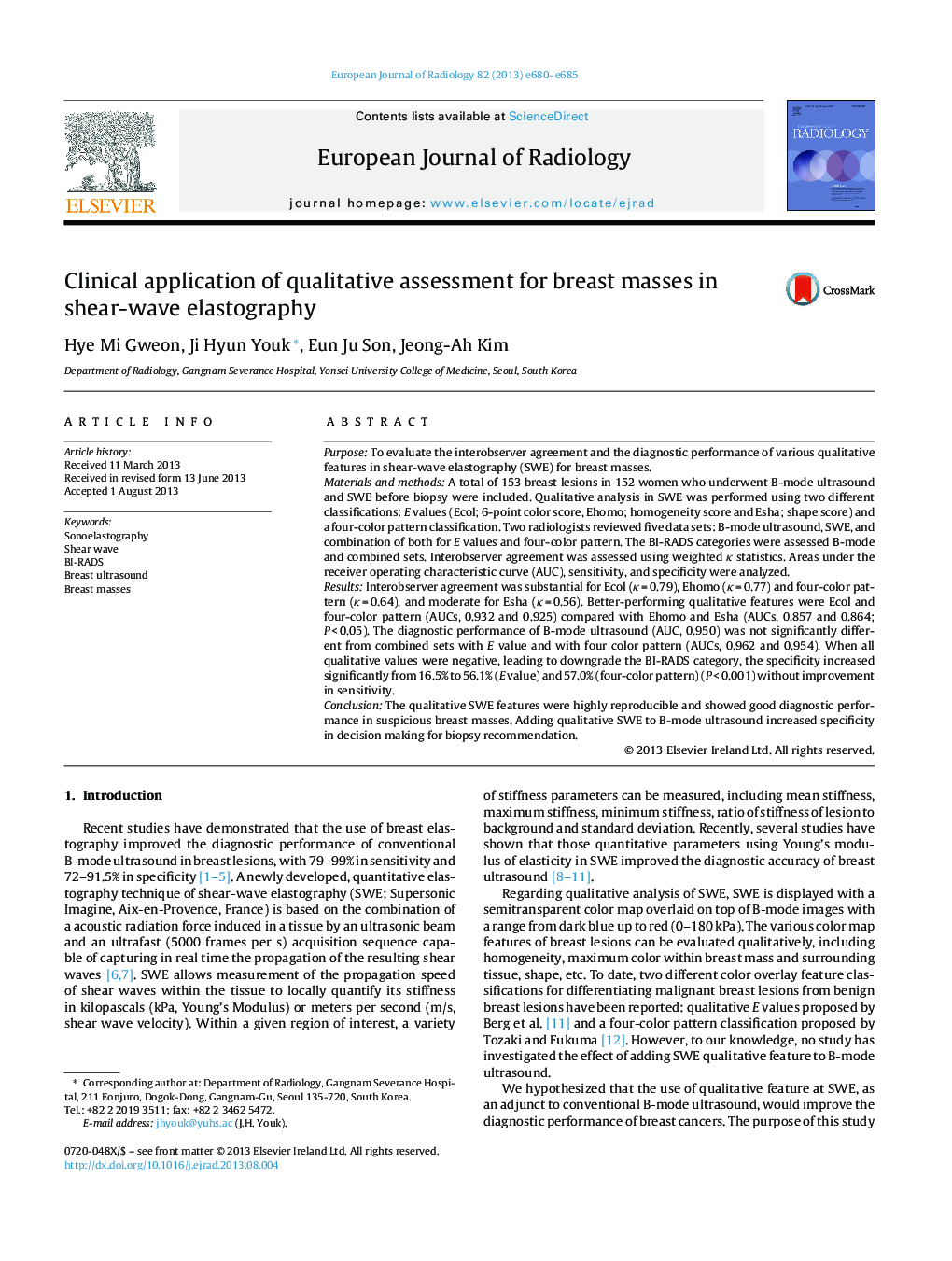| Article ID | Journal | Published Year | Pages | File Type |
|---|---|---|---|---|
| 4225640 | European Journal of Radiology | 2013 | 6 Pages |
PurposeTo evaluate the interobserver agreement and the diagnostic performance of various qualitative features in shear-wave elastography (SWE) for breast masses.Materials and methodsA total of 153 breast lesions in 152 women who underwent B-mode ultrasound and SWE before biopsy were included. Qualitative analysis in SWE was performed using two different classifications: E values (Ecol; 6-point color score, Ehomo; homogeneity score and Esha; shape score) and a four-color pattern classification. Two radiologists reviewed five data sets: B-mode ultrasound, SWE, and combination of both for E values and four-color pattern. The BI-RADS categories were assessed B-mode and combined sets. Interobserver agreement was assessed using weighted κ statistics. Areas under the receiver operating characteristic curve (AUC), sensitivity, and specificity were analyzed.ResultsInterobserver agreement was substantial for Ecol (κ = 0.79), Ehomo (κ = 0.77) and four-color pattern (κ = 0.64), and moderate for Esha (κ = 0.56). Better-performing qualitative features were Ecol and four-color pattern (AUCs, 0.932 and 0.925) compared with Ehomo and Esha (AUCs, 0.857 and 0.864; P < 0.05). The diagnostic performance of B-mode ultrasound (AUC, 0.950) was not significantly different from combined sets with E value and with four color pattern (AUCs, 0.962 and 0.954). When all qualitative values were negative, leading to downgrade the BI-RADS category, the specificity increased significantly from 16.5% to 56.1% (E value) and 57.0% (four-color pattern) (P < 0.001) without improvement in sensitivity.ConclusionThe qualitative SWE features were highly reproducible and showed good diagnostic performance in suspicious breast masses. Adding qualitative SWE to B-mode ultrasound increased specificity in decision making for biopsy recommendation.
